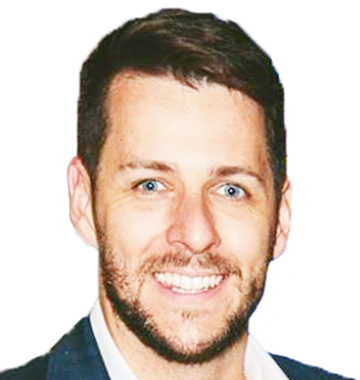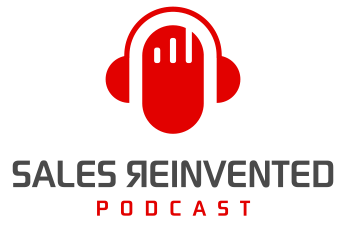Episode #421: Jamie Wood

Meet
Jamie Wood
Jamie has over 14 years of media sales leadership experience, including out-of-home, radio, podcasting, e-sports, and digital. He joined Boost Media International in 2023 after leading revenue and operations for oOh!Media and ARN. Jamie has driven record market share results, diversified revenues, and commercialized new media platforms. Based in Brisbane, he can be reached at jamie@boostmedia.com.au.
Our Mission Is To Change The Negative Perception Of Sales People
Our Vision Is A World Where Selling Is A Profession To Be Proud Of
Cold-calling is valuable because it’s the fastest and most efficient way to connect with a prospective client—and it’s becoming one of the least common prospecting channels. Too many people are intimidated by phone calls and avoid it entirely. If you’re one of the few salespeople still willing to pick up the phone, you have an advantage. Learn how to leverage that advantage in this episode of Sales Reinvented.
Outline of This Episode
- [1:07] What is cold-calling? Is it still relevant?
- [2:53] Is cold-calling an art and a science?
- [3:48] Block cold-calling time in your calendar
- [5:23] Jamie’s effective opening lines and techniques
- [7:42] How to keep a cold call engaging
- [9:34] Tools, technology, and metrics
- [12:26] Jamie’s top cold-calling dos and don’ts
- [16:16] How Jamie handles objections and rejections
Jamie’s effective opening lines and techniques
The referral-based approach is the best shortcut to an effective cold call. If someone you know has let the prospect know that you’ll be reaching out, or you have a connection to name-drop, you move from a cold call to a slightly warmer call.
Maybe you’ve worked in a similar industry, been to an event they attended, or have crossed paths somewhere. Find a link whenever you can. If there’s no link or connection, be transparent. You can say, “I thought it was worthwhile reaching out to you because of…” Then you launch into your valid business reason for calling.
The best piece of advice Jamie received was to treat a cold call like any other phone call you’re making. Call as if you’re calling to speak to a parent. Focus on sounding natural and familiar. And keep the cold call as short as necessary to secure the meeting.
Resist the urge to go deep into a pitch. Remember, the purpose is to generate intrigue to secure a proper meeting.
Tools, technology, and metrics
The premium version of ChatGPT allows you to ingest websites, about pages, and annual reports of companies you’re prospecting, and spit out a summary or overview of the prospect. It can give you valid business reasons why your two companies may be a match.
Jamie also believes that LinkedIn Sales Navigator is a necessity for the modern seller. It allows you to visualize the organizational structure and understand key company metrics.
Jamie also uses Cognism to search for contact details for prospective clients. All of these tools used in conjunction help you cut down your research time, leading to more efficient prospecting.
Jamie’s top cold-calling dos and don’ts
Jamie’s list of dos and don’ts is spectacular:
- Block time in your calendar for cold-calling and protect it. Set a goal for the session (calls made, rejections, meetings booked) and prospect until you reach that goal. It’s not about motivation, it’s about discipline.
- Use a call sheet of all prospective clients you wish to contact and keep it in front of you.
- Be persistent. Park your ego and focus on the goal: booking meetings. It will be awkward and uncomfortable. Dig into it.
- Don’t prospect in front of your email inbox. There will always be something coming in more urgent or important than the prospect.
- Don’t apologize for disturbing the prospect when they answer the phone. If they answer the phone, they’ve consented to that conversation. Unless they tell you they no longer consent, assume they’re there to have the conversation.
- Don’t leave any call without getting something of value. It’s not about just a yes or a no. It’s about learning about the market you’re selling into, gaining information and intel to refine your pitch, and building your profile as someone who knows what they’re talking about.
If it’s not a yes, maybe it’s a commitment to talk at a later date. Maybe it’s a referral to someone else who may need your product or solution. Maybe it’s a referral to a different decision-maker. Or it’s an insight or piece of information you can take and fold into the next pitch you do,
How Jamie handles objections and rejections
Jamie started his career selling radio advertising. He called small and medium-sized businesses to see if they’d be willing to meet to learn how they could advertise on his radio station. His most common objection was, “We’ve used radio before, it didn’t work for our business.”
To overcome that, Jamie asked them to articulate their experience. He’d ask what station they worked with, how long ago it was, and dig deeper into why they didn’t think the campaign worked.
Then he’d say something like, “It seems to me there were some critical components missing with the campaign and strategy.” He’d ask to audit the last campaign they did and walk through his methodology to make sure that experience doesn’t happen again.
Broadly speaking, Jamie believes reframing objections is important. You’re ensuring that this prospect is right for you, too. There needs to be a relevant match. Don’t be afraid to explore if it isn’t a match. It can change your whole mindset.
Hear the rest of his advice in this episode of Sales Reinvented!
Connect With Paul Watts
Audio Production and Show notes by
PODCAST FAST TRACK
https://www.podcastfasttrack.com
Learn More About Jamie Wood
What was a pivotal moment or experience in your career that shaped your approach to cold calling, and how did it change your perspective or strategy?
When I first started in media sales, I inherited a “cold desk”; meaning I had no active clients and needed to build my own portfolio of advertisers. This was in 2009 when many smaller businesses didn’t even have a fully functional website, much less a strong presence on Linkedin or easily accessible email address. There were effectively 2 channels for me to prospect, cold calls or canvassing local businesses. Cold calling for me, was an essential part of how I built my business and remained gainfully employed.
Can you share a specific tactic or approach you’ve used in cold calling that significantly increased your success rate? Please provide a brief example or case study.
When coordinating a time to meet with the prospect, they’ll often say they’re unavailable at the first few times you’ve suggested. Rather than pushing the meeting out, bring the meeting forward i.e. “Can’t meet next Wednesday? No problems, I’m quite jammed up that week but I’m actually free this Friday”. There’s something about this technique that speeds up the process and it also reinforces that your time has value too.
Cold calling often comes with its set of challenges and rejections. Can you share a particularly tough challenge you faced while cold calling and how you overcame it?
Rejection. I don’t care who you are, nobody likes being told to go away; this is deeply encoded in our DNA. One reframe that’s very helpful is not viewing a call as a “yes” or a “no” but rather ranking it in terms of value and relevance. For example, the client declined your request to meet, but were they the right fit? Did they agree to a follow up call later? Did they suggest someone else who may be worth contacting? Did you unearth an insight that you could use on the next call? Prospecting isn’t just about booking meetings, it’s about researching the market, seeking referrals and establishing lines of contact with the right people.
What are the top three tools or resources (e.g., software, books, training programs) you consider essential for someone looking to improve their cold calling skills and outcomes?
Cognism is an amazing platform to find contact details but also has amazing content around cold calling best practice. Will Aitken is an amazing sales trainer and has a fantastic virtual course on b2b sales that covers cold calling in detail. The movie Boiler Room is always worth a watch for some cracking cold call scenes too!
How do you foresee the practice of cold calling evolving in the next few years with advancements in technology and changes in buyer behavior? What advice would you give to sales professionals to stay ahead of the curve?
Call avoidance is going to be a big one. Less and less people are inclined to answer phone calls in general. I’d say that cold calling will continue to decline in terms of popularity with sales people favouring other channels for outreach. To me this actually represents an enormous opportunity as it means that the phone will be less cluttered.
Share This Episode, Choose Your Platform!
